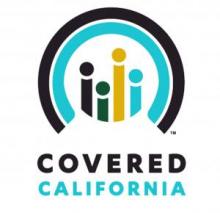Covered California Unveils 2016 Budget

California’s state health insurance exchange proposed a modest 2016 budget that includes reductions in both spending and enrollment projections.
The Covered California budget included a spending plan for $332.9 million in fiscal 2015-16, down from $390.6 million. Spending forecasts are expected to be pared down further in 2016-17, until they reach a steady state of $300 million a year in fiscal 2018.
The cut in budget is partly attributed to Covered California falling below projections in enrollment. Total enrollments stood at 1.4 million in February. That’s 300,000 short of its high-end projection of 1.7 million. It was far closer to the low-end projection of 1.3 million.
The exchange is funded substantially from a $13.95 surcharge on each individual policy and $18.50 for each enrollee covered through a small group employer.
“The lessons from real-world experience are sharpening projections going forward,” Covered California said in a statement. It noted that its projections of enrolling 500,000 new individuals during the second enrollment period were met almost exactly -- 495,000 were enrolled.
For the upcoming fiscal year, Covered California projects enrollment of 1.48 million; 1.67 million in 2016-17; 1.8 million in 2017-18 and just under 2 million in fiscal 2018-19.
“In the last two years, we established a solid foundation, and we are confident as we transition now from startup mode to ongoing operations,” said Covered California Executive Director Peter V. Lee. “Covered California is changing lives and giving consumers affordable access to the best doctors and hospitals in our state. As we move ahead, we are glad to have the resources we need, and we will continue to work to bring affordable health coverage within the reach of all Californians.”
Some of the budget cuts will be outside contractors and consultants being cut loose.
Covered California will spend a large proportion of of its budget on marketing -- $121.5 million in total. That includes $50 million in media buys and market research. However, that is one-third less than the $180.1 million that it had allocated during the current fiscal year. Cuts are being made to community grants, in-person assistance for would-be exchange enrollees and health plan “navigators.” program.
The exchange will spend an additional $10 million to hire additional positions in the information technology and human resources.
Another $900,000 will be spent to hire eight employees who will comprise a special reconciliations department. That department will ensure that enrollments are kept properly up to date in real time and that premium tax credits are paid to the participating health plans in a timely fashion.






